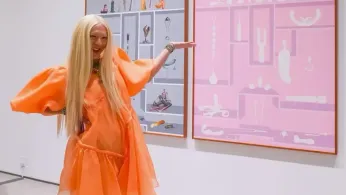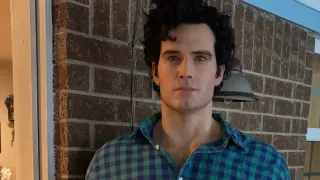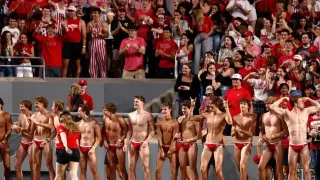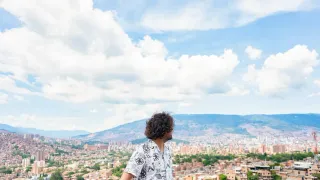
Aug 5
Young Joon Kwak: Shaping Queer Futures Through Art and Performance in 2025
READ TIME: 3 MIN.
In the ever-shifting landscape of queer culture, few artists are making as much noise this month as Young Joon Kwak, a Los Angeles-based multidisciplinary artist whose work pushes the boundaries of performance, sculpture, and collective action. Kwak’s practice is rooted in the affirmation of transgender and nonbinary bodies at a time when such visibility is both vital and politically charged. Their recent prominence—highlighted by features in Artsy’s “30 LGBTQ+ Artists Defining Queer Art in 2025” and ongoing performance projects—signals a broader movement toward intersectional, community-driven art that challenges mainstream narratives and uplifts queer voices .
Kwak’s art is inseparable from the lived experiences of transgender and nonbinary people, especially in a year marked by ongoing legislative and cultural challenges to queer existence. Their recent work, "To Refuse Looking Away from Our Transitioning Bodies", draws attention to the beauty, vulnerability, and resilience inherent in trans bodies—insisting on presence in the face of erasure . This piece, exhibited as part of 2025 Pride Month celebrations, uses abstraction and the physicality of sculpture to confront viewers with the realities of transition and embodiment, inviting empathy and solidarity.
Beyond the gallery, Kwak’s influence extends through mentorship and collaboration. As a mentor in the Queer|Art|Mentorship program, Kwak supports emerging LGBTQ+ artists like Sungjae Lee, whose performance-based video installations interrogate the intersections of race, labor, and Christian ritual within queer Asian identities . Through such mentorships, Kwak fosters a lineage of queer artistic expression, ensuring that marginalized voices are heard and nurtured.
Performance is central to Kwak’s practice, serving both as an artistic medium and a form of queer ritual. Their collective, Mutant Salon, brings together trans, nonbinary, and gender-nonconforming artists to host immersive happenings that combine drag, music, spoken word, and visual art . These gatherings, staged in unconventional venues across Los Angeles, are more than just art events—they are acts of mutual care, resistance, and celebration.
This month, Mutant Salon’s latest event, held at an East LA community space, drew a diverse crowd for an evening of experimental drag, DJ sets, and participatory installations that blurred the lines between performer and audience . Attendees described the night as a “queer utopia” where chosen family and self-expression took center stage . Such rituals offer rare spaces of affirmation, joy, and healing, especially important for those navigating the ongoing realities of discrimination and exclusion.
Kwak’s work is deeply informed by intersectional feminism and the lived experiences of queer people of color. As an immigrant and a member of the Korean diaspora, they bring a global perspective to their practice, challenging the white-centric narratives that often dominate mainstream queer and art histories . Their collaborations frequently foreground issues of race, migration, and the politics of care, creating art that is as much about solidarity as it is about aesthetics.
Kwak’s recent mentorship of Sungjae Lee, whose work addresses the liberation of queer Asian bodies through ritualized performance, exemplifies this commitment to intersectionality and collective growth . By cultivating platforms for emerging artists from various backgrounds, Kwak’s influence reverberates far beyond their individual practice.
As anti-trans legislation continues to threaten the rights and safety of transgender people across the United States, artists like Kwak are vital voices in the cultural conversation. Their work insists on the value and humanity of queer lives, offering both critique and hope. This month’s projects—ranging from gallery exhibitions to underground performances—demonstrate the power of art as both refuge and weapon in the fight for justice.
Kwak’s visibility in national and international publications, their community-based collaborations, and their unwavering commitment to affirming queer existence make them a leading figure in contemporary queer culture. For LGBTQ+ audiences, Kwak’s art is not just representation—it is a call to action, a source of healing, and a testament to the transformative power of queer creativity .






